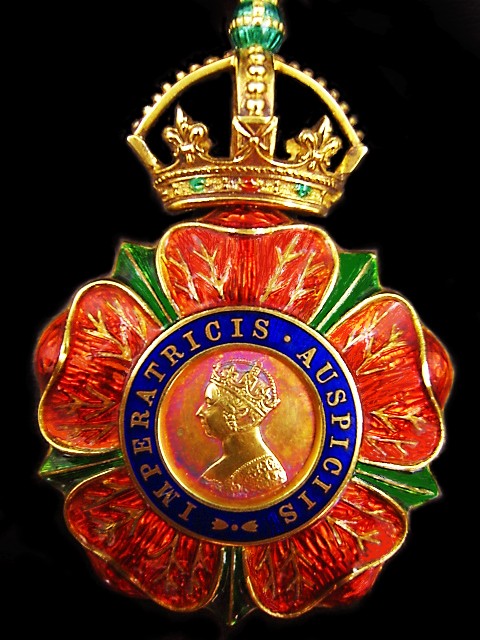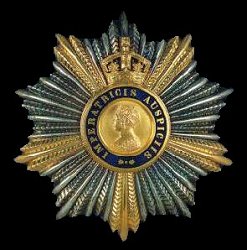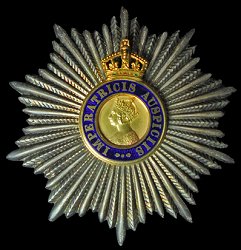 |
| Lord Northcote, Viceroy, wearing the collar of the order |
The Order of the India Empire was the second of the orders of chivalry founded by Queen Victoria to mark meritorious service in India, in order of precedence after the Order of the Star of India. It was established by letters patent of 31 December 1877, following the adoption by Victoria of the title 'Empress of India' in 1876.
 |
| The Maharaja of Dhrangadhra-Halvad, the last surviving member of the order |
The order lapsed in 1947, following the independence of India and Pakistan. The the last surviving member of the order, the Maharaja of Dhrangadhra-Halvad a KCIE, died in 2010.
Knight Grand Commander (GCIE)
 |
| The Maharao of Sirohi wearing the mantle, collar and star of a GCIE |
The mantle was only worn on special state occasions - in ordinary full dress uniform, a GCSI wore the star on the left breast and the badge on the left hip from a broad sash.
The collar was a silver-gilt chain composed of elephants, lotus flowers, peacocks in their pride and Indian roses with, in the centre the Imperial Crown.
The badge was a gold five-petalled rose, enamelled crimson and with a green barb between each petal.
In the centre is an effigy of Queen Victoria in gold, surrounded by a purple ribbon originally inscribed VICTORIA IMPERATRIX, but from 1901 IMPERATRICIS AUSPICIIS ('under the auspices of the Empress). The letters I N D I A were inscribed on the petals of the first type,
but not on the second.
 |
| GCIE neck badge |
The star was composed of fine silver rays with smaller gold rays between them.; In the centre, within a purple circle bearing the motto of the order and surmounted by the Imperial Crown, is the effigy of Queen Victoria in gold.
 |
| GCIE Star |
Knights Commander (KCIE)
 |
Sir Charles Augustus Tegart, KCIE, CSI, MVO |
KCIEs wore a badge round the neck and a star on the left breast.
These were similar to those of GCIEs, but smaller and less lavishly decorated, the star being entirely of silver.
 |
| KCIE Star |
 |
| CIE breast badge (1st type) |
As with the insignia of the other classes of the order, these came in two types - with and without the letters I N D I A.
 |
Maj-Gen Sir Charles Metcalfe MacGregor, KCB, CSI, CIE |
No comments:
Post a Comment